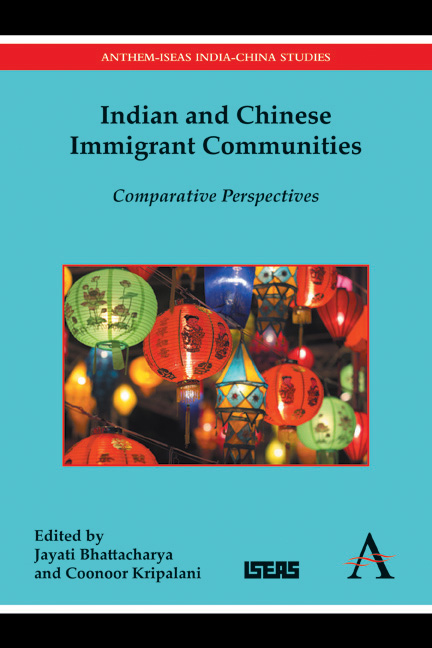Book contents
- Frontmatter
- Contents
- Foreword
- Acknowledgements
- Introduction
- Section I Historical Antecedents and the Question of Nationality
- Section II The Meeting Ground: Indians and Chinese in Southeast Asia
- Section III Indians in China and Chinese in India
- 11 Law and Its Impact on Diasporic Philanthropic Institutions: The Practices of Sinchew and the Waqs in the Straits Settlements
- 12 Indian Soldiers and Policemen in China in the Colonial Period
- 13 New Indian Migrants in Guangzhou and Its Vicinity
- 14 Who Is a Chinese-Indian? Search for the Cultural Identity of the Chinese-Indians in Kolkata, Sihui and Toronto
- Section IV Across the Globe: Indian and Chinese Diasporas
- Postscript Shifting Worlds and Changing Identities: The Reshaping of the Chinese-Indian Communities in India after the 1962 “Sino-Indian Incident”
- List of Contributors
- Index
12 - Indian Soldiers and Policemen in China in the Colonial Period
from Section III - Indians in China and Chinese in India
Published online by Cambridge University Press: 05 December 2015
- Frontmatter
- Contents
- Foreword
- Acknowledgements
- Introduction
- Section I Historical Antecedents and the Question of Nationality
- Section II The Meeting Ground: Indians and Chinese in Southeast Asia
- Section III Indians in China and Chinese in India
- 11 Law and Its Impact on Diasporic Philanthropic Institutions: The Practices of Sinchew and the Waqs in the Straits Settlements
- 12 Indian Soldiers and Policemen in China in the Colonial Period
- 13 New Indian Migrants in Guangzhou and Its Vicinity
- 14 Who Is a Chinese-Indian? Search for the Cultural Identity of the Chinese-Indians in Kolkata, Sihui and Toronto
- Section IV Across the Globe: Indian and Chinese Diasporas
- Postscript Shifting Worlds and Changing Identities: The Reshaping of the Chinese-Indian Communities in India after the 1962 “Sino-Indian Incident”
- List of Contributors
- Index
Summary
There are many grounds for drawing comparisons between overseas Indian and Chinese communities, particularly those that emerged in the colonial era. Major dislocations and changes in socio-economic conditions in the nineteenth and twentieth centuries in these countries gave rise to huge outflows of population. Indian and Chinese communities came to be established not just in neighbouring regions of Asia but also in far-flung regions of the world, in the Pacific and Caribbean islands, in Europe and Africa, and in North, Central and South America. Apart from the traditional presence of merchants, indentured labour was a predominant feature of these communities: the conditions under which Indian and Chinese labour were recruited and transported overseas and under which they toiled were essentially the same. The laws governing their immigration into foreign countries and the discrimination they faced there were also similar in nature.
However, the Indian community in China in the colonial era differed from the general pattern of overseas Indian and Chinese communities in one major respect: it consisted of a high proportion of men from the security services – soldiers, policemen and watchmen. Particularly after the 1880s, anywhere from 50–85 per cent of the Indians in Hong Kong, Shanghai and the treaty ports of East China came from this category. This pattern was not replicated in virtually any other Indian or Chinese immigrant community.
This paper explores why the Indian community in China in the colonial period consisted of such a high proportion of soldiers, policemen and watchmen. In particular, what brought such a large number of young males from the rural areas of particular districts of Punjab province to China? What sustained this trend of migration for so many decades, and what brought it to an abrupt end in the 1940s? The paper will also examine the role of China as a transit point for these Indians, as they sought to migrate to other parts of the world, and also when they sought to return to India for economic or political reasons.
- Type
- Chapter
- Information
- Indian and Chinese Immigrant CommunitiesComparative Perspectives, pp. 187 - 196Publisher: Anthem PressPrint publication year: 2015



